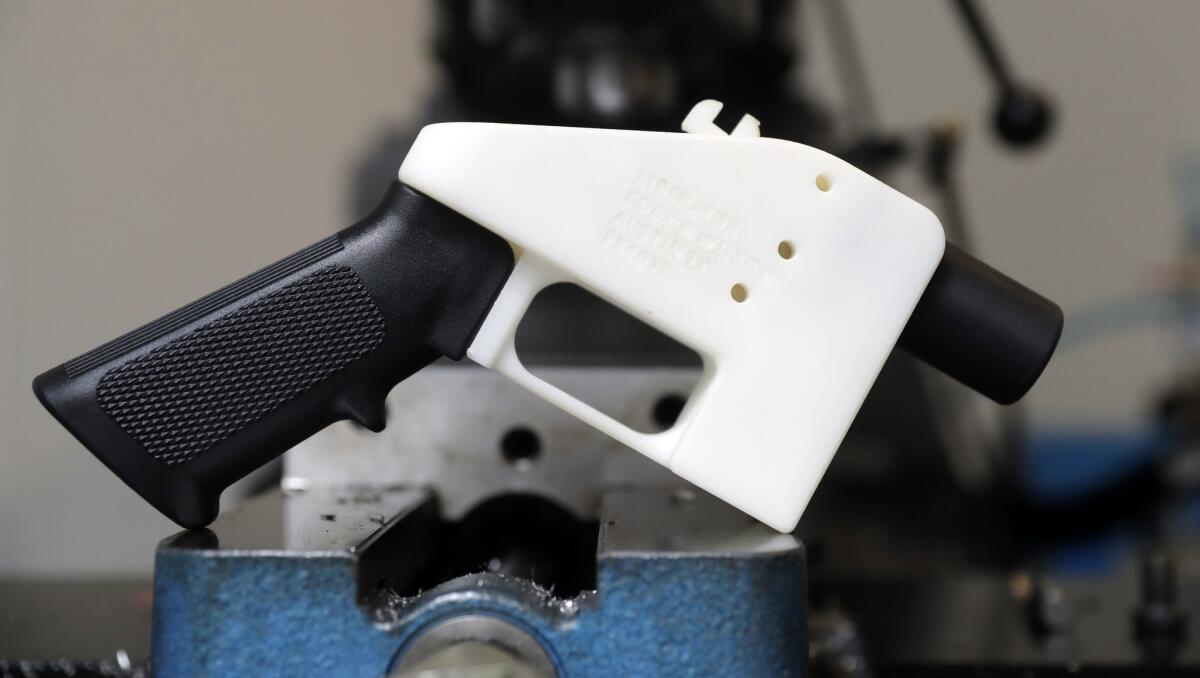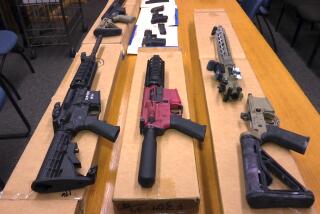‘Undetectable’ plastic 3-D printed guns have been detected by TSA airport screeners

- Share via
While lawmakers feud over the release of blueprints for 3-D-printed plastic guns, the Transportation Security Administration wants fliers to know that airport security screeners have been able to spot the so-called untraceable and undetectable weapons in carry-on bags.
The 3-D-printed gun controversy erupted in June when Defense Distributed of Austin, Texas, reached a settlement with the federal government to allow it to make the plans for the guns available for download. Then a federal judge in Seattle issued a temporary restraining order to stop the release of blueprints, and a coalition of 20 attorney generals, including California Atty. Gen. Xavier Becerra, filed a motion on Aug. 2 to continue to block the release of the plans.
But TSA officials say 3-D-printed guns and firearm components have been in circulation for years and have been found on passengers trying to board commercial flights.
Since August 2016, the TSA has detected two 3-D-printed guns and two 3-D-printed firearm components, all of which were voluntarily abandoned by the passengers who were packing them in their carry-on bags, TSA spokesman Michael Bilello said.
The most recent component was discovered in January at McCarran International Airport in Las Vegas.
“TSA officers are trained and on the lookout for 3-D guns,” he said. “We have proven detection capabilities and screening protocols in place.”
Like all firearms, explosives and replica weapons, 3-D-printed guns are prohibited in the cabin of commercial planes. Passengers caught trying to bring any weapons into a flight are turned over to local law enforcement for prosecution and could face civil penalties of up to $9,800 imposed by the TSA.
Twitter: @hugomartin
More to Read
Inside the business of entertainment
The Wide Shot brings you news, analysis and insights on everything from streaming wars to production — and what it all means for the future.
You may occasionally receive promotional content from the Los Angeles Times.











